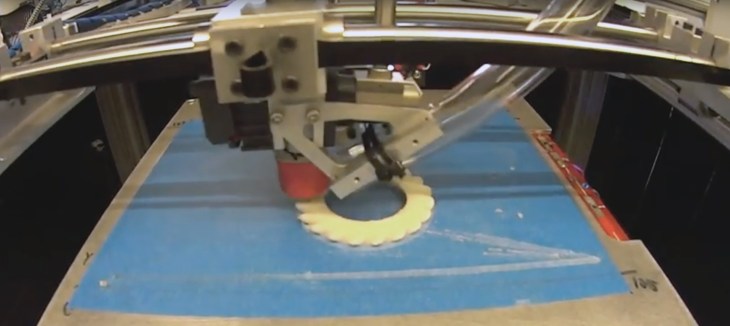There are plenty of reasons desktop 3D printing never really took off with consumers. Speed isn’t the main one, but it’s certainly up there. If you’ve ever attempted to print anything larger than a penny, you know that, as a late, great philosopher once said, the waiting is the hardest part.
Mind you, this research is still probably a few years away from production, but a team of engineers at MIT have shown off a 3D printer capable of creating builds up to 10 times the speed of their consumer counterparts. According to the team, objects that take around an hour to print on conventional systems are done in a matter of minutes.
The system is built around FDM — the same technology used in most desktop 3D printers, which deposits melted plastic layers to build up a structure. MIT made some key tweaks to the print head in order to speed things up, including a screw mechanism that feeds filaments through at higher speeds by getting a tighter grip on the plastic than the traditional pinch wheel model.
The print head also added a laser near the new mechanism capable of melting the plastic much more quickly. Those pieces were coupled with a speedier gantry capable of moving the print head at a higher speed in line with the upgraded print speed.
As far as when this technology might actually arrive in the market, that depends, in part on what kind of deal MIT is able to strike.
“I would be thrilled if it reaches the market,” Associate Professor John Hart told TechCrunch today. “We’re not sure of the path it will take yet. We may start our own company that will make or sell these faster desktop printers or work with an existing 3D printer company to license the technology into their current machines.”
The tech would definitely be useful for companies already using desktop 3D printers for prototyping, reducing dramatically the speed to print. As far as other truly useful applications for FDM desktop 3D printers, on the other hand, that’s going to take a few more teams of engineers to determine.
